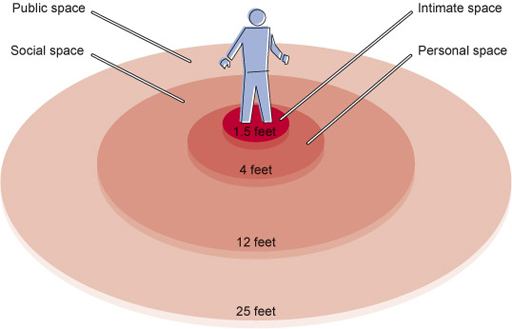3 Communicating connections
A key skill in the social sciences is to stop and look at everyday life, at what we might usually take for granted, and then try to explore it to find out more.
You will develop the skill of stopping and looking at what is taken for granted throughout the course and not just in the social science weeks.
Think back to the beginning of this section, which discussed the different ways that individuals greet one another. When you greet someone, you are communicating something about your identity and which groups or cultures you feel connected to. You are, in a sense, telling the rest of society where you feel you belong. It is very difficult, in fact, to do or say anything that does not give away clues to your cultural identity.
One form of behaviour which marks out how people belong to a culture is the way people stand (close or far away) with other individuals. Edward Hall (1966) recognised that the physical distance between people, known as interpersonal space, reveals a great deal about relationships. The better you know someone, the closer you stand to them.
Hall identified four types of interpersonal space which are illustrated in Figure 5. Intimate space is the tightest bubble around a person and only closest family and intimates can enter it. Other family members or close friends can enter personal space, and acquaintances or colleagues can enter social space. Public space would be occupied by those unknown or not known well to the individual.
Hall’s approach is very typical of social science. It probably came as no surprise that people ‘distance’ themselves from people they don’t know very well. But Hall then explored this notion with research and was able to suggest different sorts of ‘space’. These suggestions can then be tested out by further research.
While carrying out his research, Hall further noticed that different cultures prefer different distances apart for personal space. This has been borne out by research which compared the distances adopted by couples from Japan, Venezuela and the USA. This research found that the Japanese couples tended to sit furthest apart, while Venezuelans tended be closest together. Americans were somewhere in the middle (Sussman and Rosenfeld, 1982).

